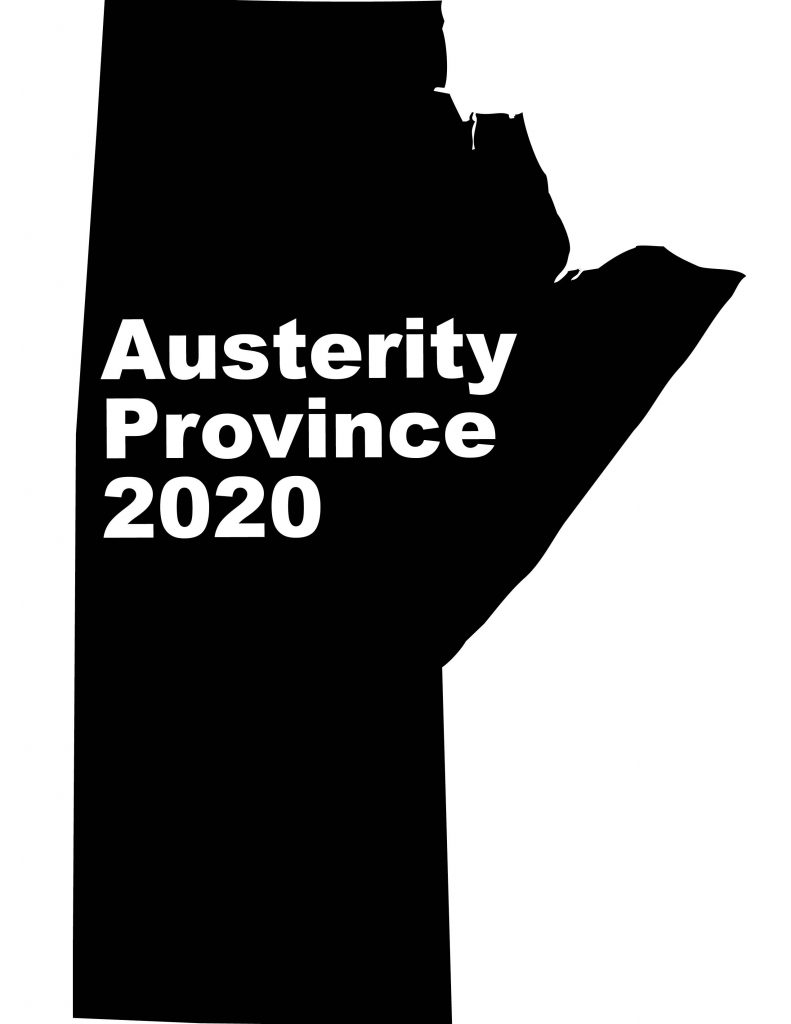By Lynne Fernandez

The province’s May 4 news release reminds us how much the private sector and government finances are being affected by the pandemic, the efforts made to date to ensure our healthcare sector can respond, and claims to be “working together with management, public-sector unions and our front-line workers [. . .] to find creative ways to redirect resources to where they’re needed most [. . .]”, while minimizing layoffs. It also repeats misleading information about the province’s fiscal position in an effort to pressure public sector workers to accept “reduced workweeks and possible work sharing options, to achieve the necessary reduction in workforce expenses”- an odd way to minimize layoffs.
Prior to May 4th, the business sector, university administrators, unions, banks and professors of finance and economics had uniformly warned against these austerity measures – measures sure to make our already beleaguered economy much worse. An analysis by economists Hajer and Fernandez spelled out exactly how much damage would be caused by cutting the public sector and other government cuts, and it also rebutted the province’s fearmongering over Manitoba’s debt. The news release was clearly designed to respond to this preponderance of negative press.
It isn’t clear if the province is backing down on its plans to reduce public sector staff costs by between 10 – 30 percent, or if that initial order was floated to traumatize people and make them feel relief when they lowered expectations to 2.2 percent. Neither plan seems likely to maintain good relations with voters, which is why damage control in the form of $200 cheques to all Manitoba seniors was deemed necessary. This gesture could backfire as an increasingly sceptical public doubts the motives behind such uncharacteristic generosity, especially when getting help for children living in poverty, or people on EIA is like pulling teeth. They’re obviously counting on the fact that seniors vote whereas poor people, well not so much. But many seniors do not live in poverty and have publicly stated they do not need the $200.
The province definitely did not back down on its claims that Manitoba has the highest debt of all provinces. It needs to keep this false idea alive as it is on this one claim alone that it justifies the austerity measures it is so addicted to. It doesn’t matter that the claim has been effectively debunked, and by no less than a CIBC economist (in an interview with CBC’s Joanne Lavasseur). It seems we have to go over this again.
In a Treasury Board presentation to public-sector unions, a chart from CIBC Economics shows the provinces’ tax-supported debt as a percentage of operating revenue, as calculated by S & P bond rating agency. For Manitoba, BC and New Brunswick, the debt levels include government debt and hydro debt from their crown corporations. The graph indicates how much is government debt and how much is hydro debt. The government persists in using the total debt, despite the fact that the CIBC economist insisted that it shouldn’t: Manitoba Hydro is responsible for paying its own debt, it isn’t tax supported, which is why CIBC is careful to show the difference. When our government-only debt-to-revenue level (closer to 190 percent compared to the 297 percent reported in the news release) is compared to other provinces, it falls in the middle of the pack, as does S & P’s A+ Positive rating – higher than Alberta’s, Ontario’s, New Brunswick’s, PEI’s and Newfoundland’s.
The May 4 news release also states that Manitoba has the highest ‘direct’ debt per capita of all provinces. Once again, Lavasseur’s report shows that Manitoba’s per-capita debt (not including Hydro debt) is fourth highest (after Ontario, Quebec and Newfoundland and Labrador). Lavasseur did a nice job explaining all this and it seems downright Orwellian that it has to be brought up again.
The debt/GDP ratio is a more widely accepted measure of a jurisdiction’s debt health. To repeat the Hajer/Fernandez piece, Manitoba’s ratio going into the crisis was 34.3 percent – middle of the road and obviously not controversial enough to be used by the government. We estimated it could go as high as 44 percent (very healthy under the circumstances), but only if the province’s prediction of a $5 billion budgetary shortfall is right, and we have serious doubts about that. Consider Dan Lett’s piece in the Winnipeg Free Press pointing out that the RBC thinks Manitoba’s deficit will come in around $1.5 billion, and that “Manitoba is expected to come out with one of the smallest fiscal impacts.”
We don’t know why Premier Pallister is the only Canadian premier clinging to an austerity agenda, or why he is so hell bent on adding more economic misery and alternative facts to the most stressful time of our lives. It would be better for our mental health if he would stop. But adversity can also rally our collective strengths, and we’re seeing some smart and determined journalists digging for answers, and clear-eyed leaders from a variety of sectors who are not afraid to speak truth to power.
Let’s hope everyone keeps up the pressure.
Lynne Fernandez holds the Errol Black Chair in Labour Issues at the Canadian Centre for Policy Alternatives, MB.


